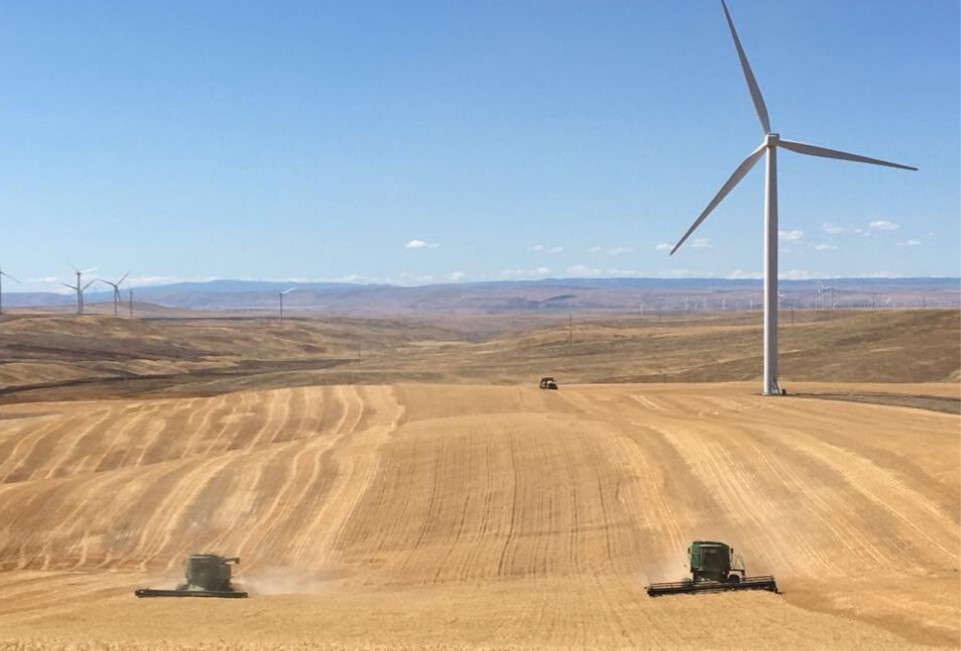It was an unusually calm morning at Blown Away Ranch outside Ione, Oregon. Dozens of wind turbines surrounding Deacon and Erin Heideman’s farm operation were still as we pulled up to their tidy, welcoming homestead. A mastiff dog named Duke greeted us first. He was as big as a calf, but quickly let us know we were welcome.
I was travelling in the Pacific Northwest (PNW) with two Korean journalists doing research for an article on how U.S. wheat is developed, grown and transported to flour mills, bakeries and consumers in South Korea. U.S. Wheat Associates (USW) and the wheat commissions in Washington, Idaho and Oregon welcomed the opportunity to show these reporters the wholesome, reliable nature of our export supply system.
South Korean flour millers have imported U.S. wheat for more than 50 years. Over the past 10 years, the average import volume is almost 1.3 million metric tons (MMT) per year including soft white (SW) and Western White, hard red spring (HRS), and hard red winter (HRW).
In Washington’s Palouse Country
I met Mr. Changsup Song and Mr. Haewook Kim on a Monday afternoon at the Washington Grain Commission (WGC) office in Spokane, Wash. They had spent the morning learning about the Washington wheat industry with WGC CEO Glen Squires and Vice President Mary Palmer Sullivan. They also saw how up-country elevators like High Line Grain Growers near Cheney, Wash., load train cars with SW wheat bound for river terminals and export elevators.
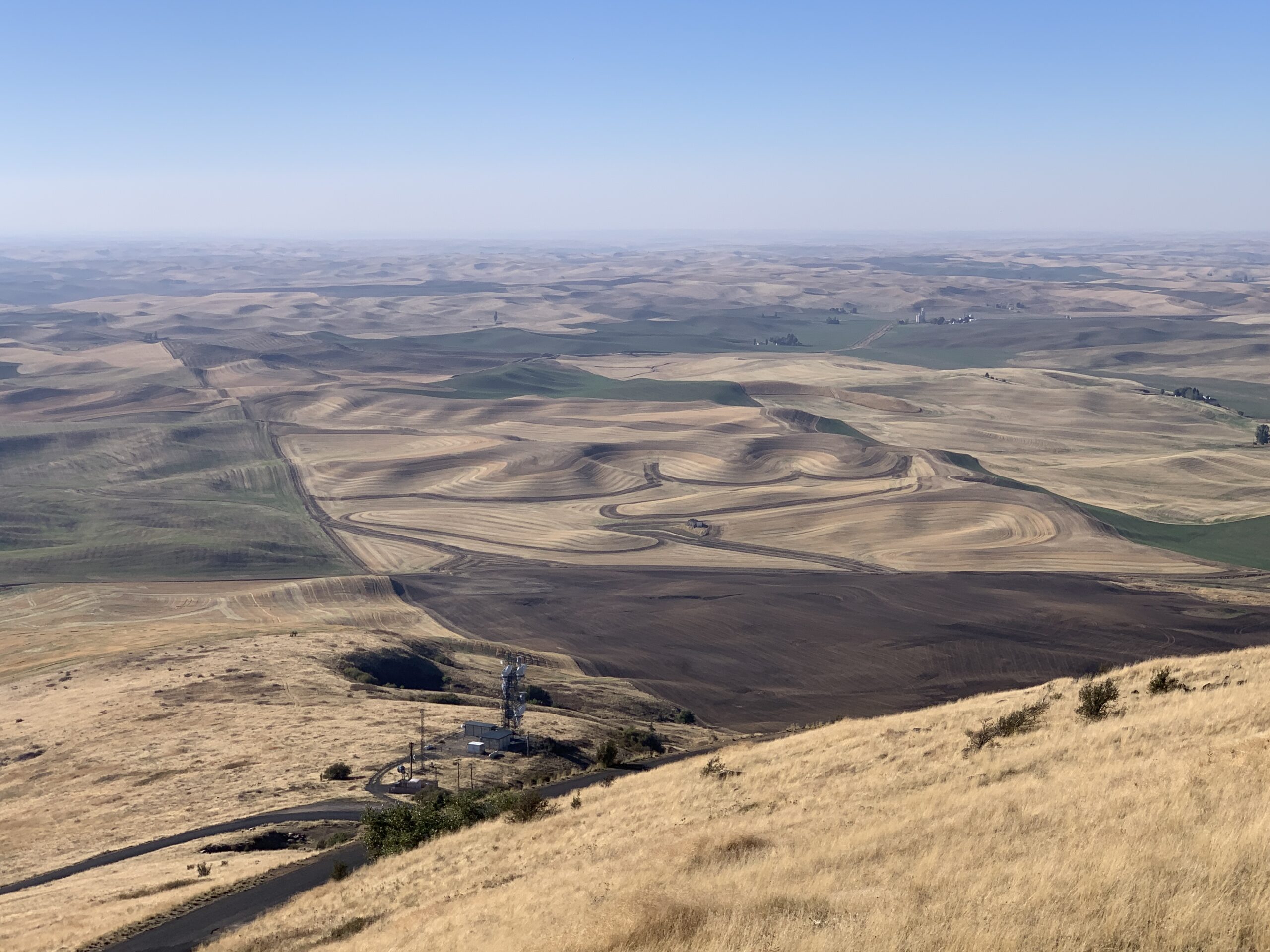
On the drive from Spokane to Pullman, Wash., we braved the tight curves on the drive up Steptoe Butte to take in the panoramic view of Washington’s iconic Palouse Country. Here and there we could see the dust from a few farmers still planting winter SW in mid-October. Away from irrigated land around rivers, dry land farmers in the region plant into fields that have lain fallow for a full year to increase available moisture and improve organic matter in the soil.
On the Washington State University (WSU) campus in Pullman, the journalists saw how WGC invests money from wheat farm families in new variety research and development. At the recently expanded breeding lab, Dr. Aaron Carter, Professor, O.A. Vogel Endowed Chair in Winter Wheat Breeding and Genetics, WSU, and Dr. Kim Garland-Campbell, Research Geneticist, USDA-ARS, explained how their work serves both farmers and end-users. Field testing proves the yield potential of each new line. The functional quality of flour from the varieties is first tested in cooperation with the USDA’s Agricultural Research Service Western Wheat Quality Laboratory on the WSU campus where Research Biologist Dr. Alecia Kiszonas hosted our tour.
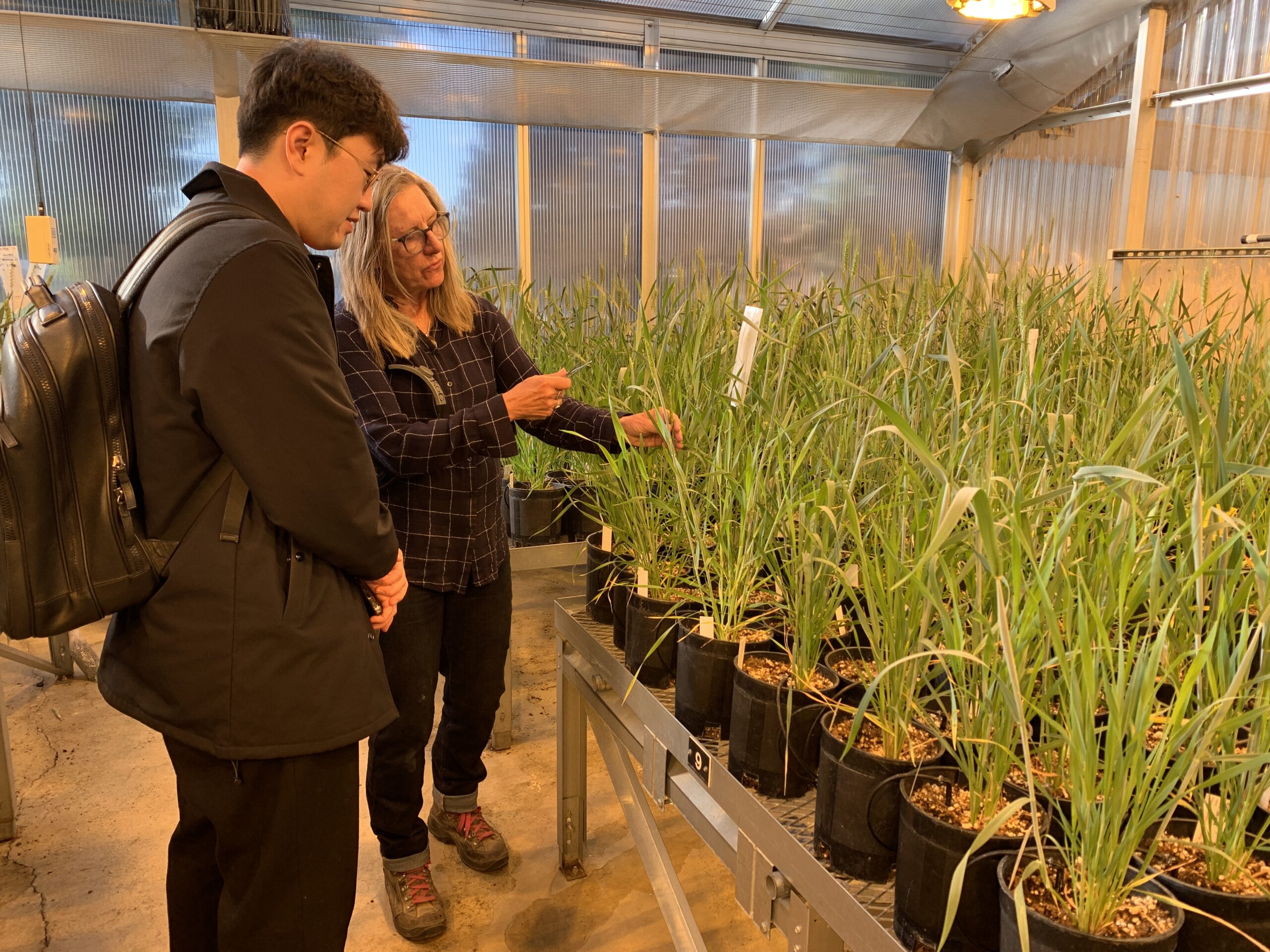
How the Wheat is Moved
Our little team moved on to Lewiston, Idaho, where Song and Kim interviewed Genesee wheat farmer and Idaho Wheat Commissioner Joe Anderson. Their questions focused on the varieties Anderson plants and about the risk management tools available to PNW farmers. A stop at the Lewis and Clark Terminal showed how farmers deliver truckloads of grain that is segregated by protein level, stored and then loaded onto barges for the journey down the Snake River to the Columbia River and export elevators in the Portland, Ore., area. The Port of Lewiston is the most inland port on the U.S. west coast.
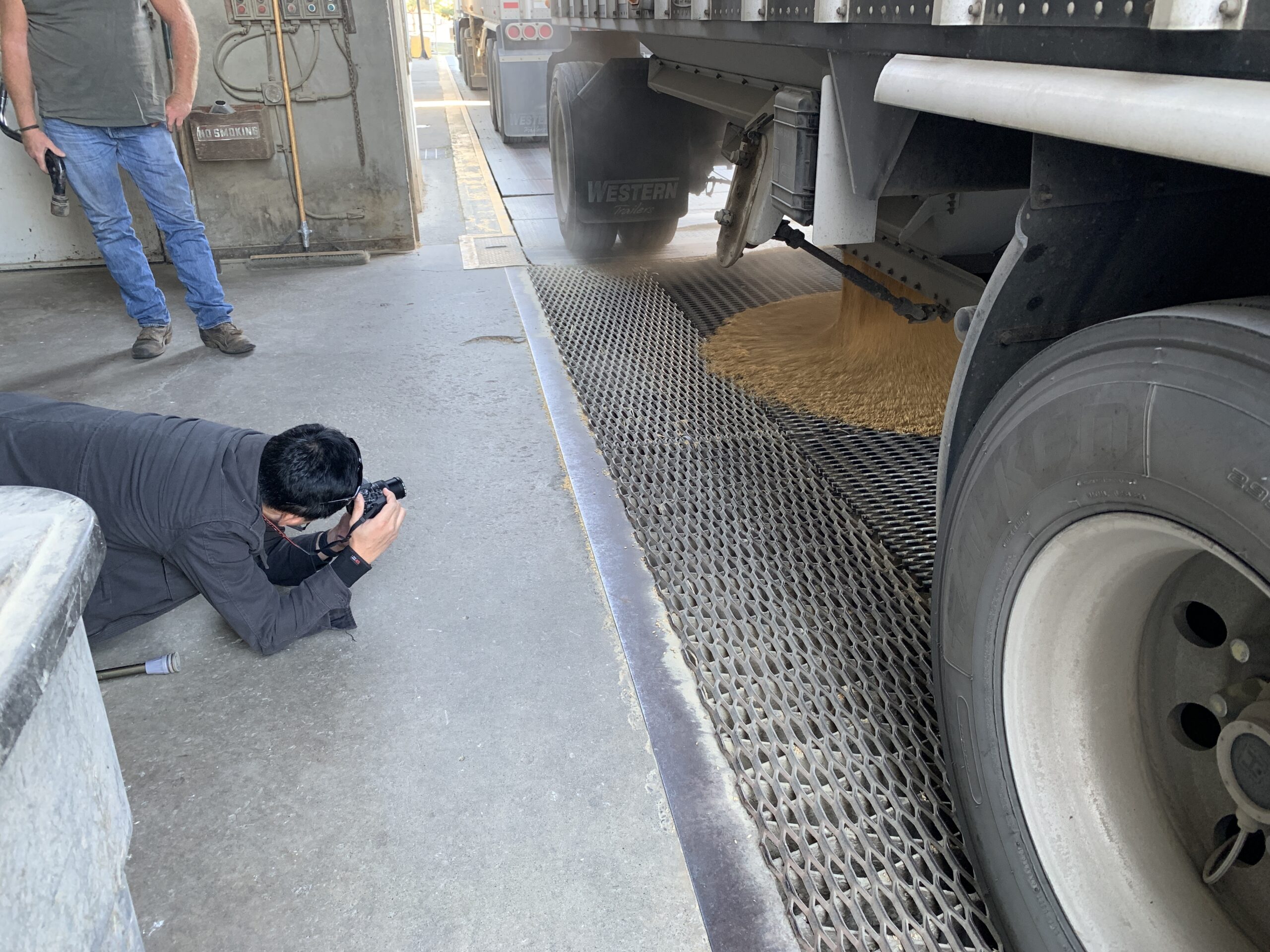
Our long drive from Lewiston, through Washington State’s Tri-Cities, to Portland featured the truly unique vistas along the Columbia River and the wheat country of northern Oregon.
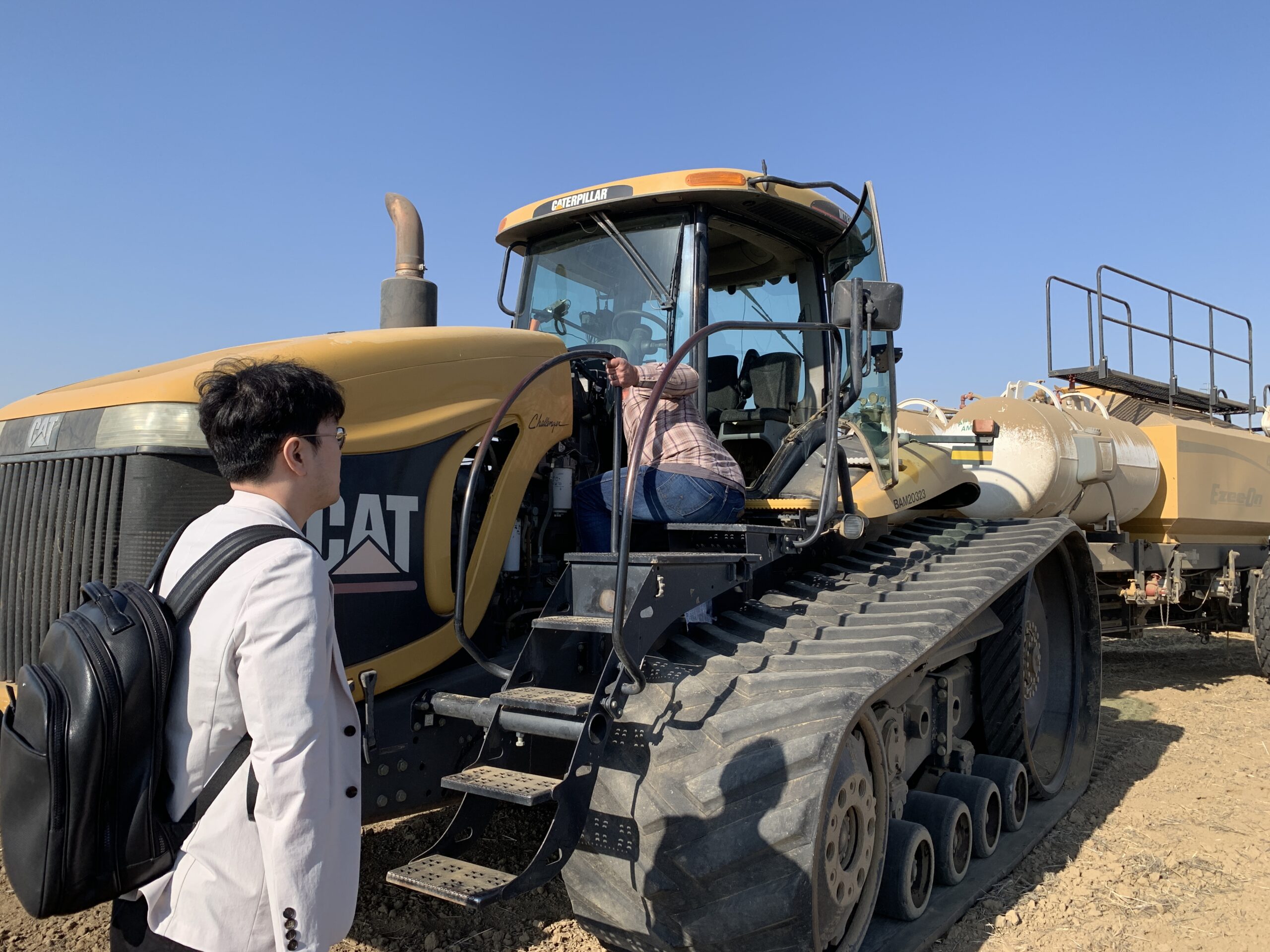
Our visit with the Heideman family gave Song and Kim additional insight into dry-land wheat farming, while enjoying fresh, homemade cake baked with flour from the family’s operation. The chance to ride and talk with Deacon Heideman as he planted soft white wheat was a highlight for the journalists. The photo at the top of this page is from the ranch’s website.
“We are a family farm raising wheat for a global market, working diligently to be sustainable. Our desire is to share our slice of heaven with others while maintaining our farming heritage so that we can pass it to the next generation in a better state.” – The Heideman Family, Blown Away Ranch, Ione, Oregon
Outside of Grass Valley, Ore., USW Past Chairman Darren Padget discussed how PNW farmers help ensure they produce the best quality wheat possible by publishing a Preferred Variety List based on yield potential and functional quality. His family had completed harvest and winter wheat planting by the time our team arrived, but Darren was able to show Song and Kim the operation’s seeding, application and harvesting equipment.
Assuring Quality and Supply
In Portland, Ore., after a briefing with the USW West Coast Office team and the Oregon Wheat Commission, the journalists visited the Wheat Marketing Center, offering an impressive look at how farmers invest a part of their own incomes into demonstrating the diversity and quality of U.S. wheat to domestic and overseas customers.
At the regional USDA Federal Grain Inspection Service (FGIS) office, experienced inspector Jimmy Pan offered a complete demonstration of how the agency independently inspects wheat at vessel loading to certify that the quality of the wheat loaded matches the quality stated in the customer’s import contract.
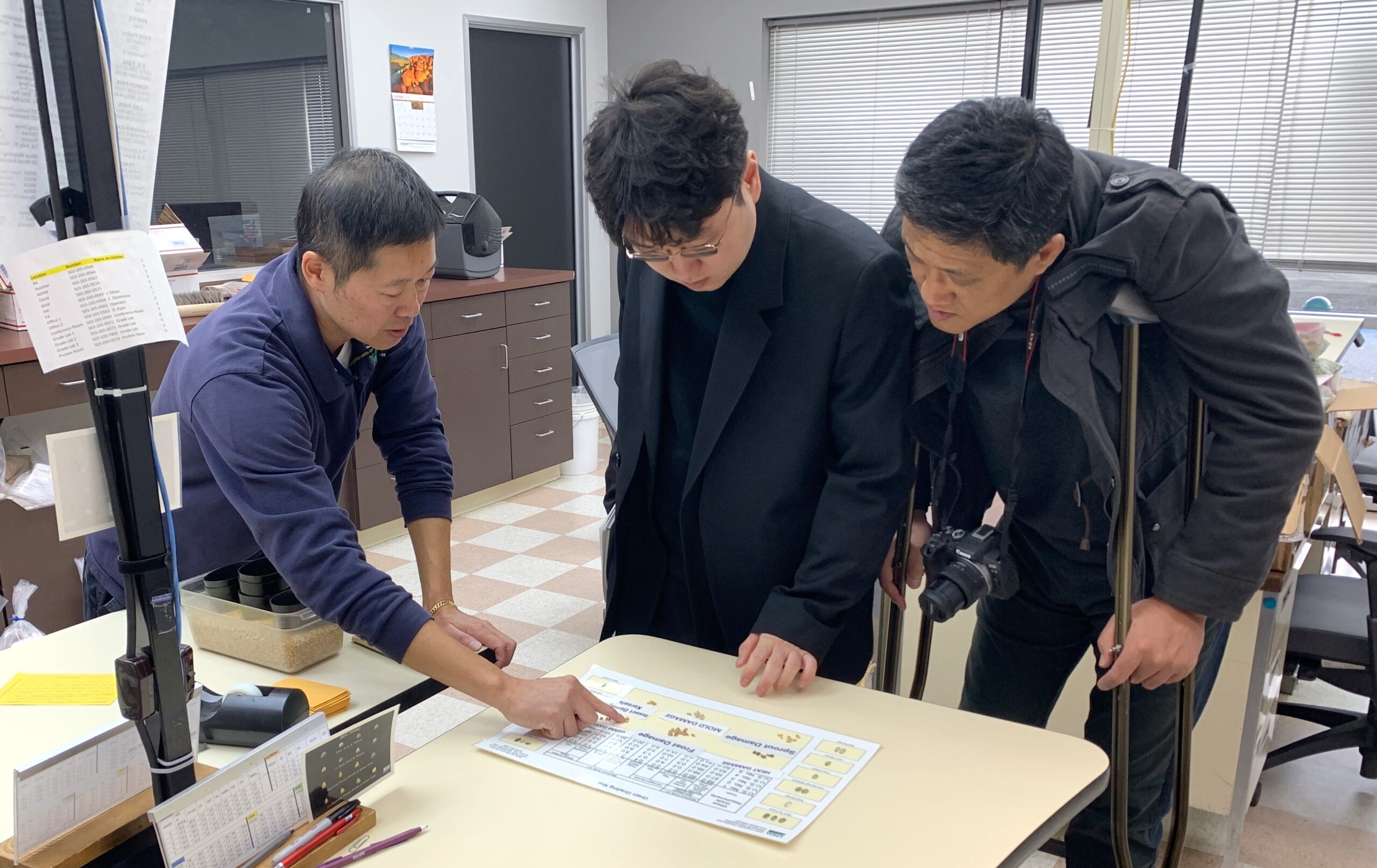
Even as the world’s wheat buyers face a lot of uncertainty in today’s market, USW, the farmers we represent and our state wheat commission members were happy to open up our system, processes and quality to these Korean journalists. We believe that transparency contributes to world food security and economic stability.
We also believe Mr. Song and Mr. Kim left the United States with assurance that the U.S. industry will remain an open, dependable supplier of the highest quality wheat in the years ahead.
USW thanks every organization that helped make arrangements for this important team event.

By USW Vice President of Communications Steve Mercer.

